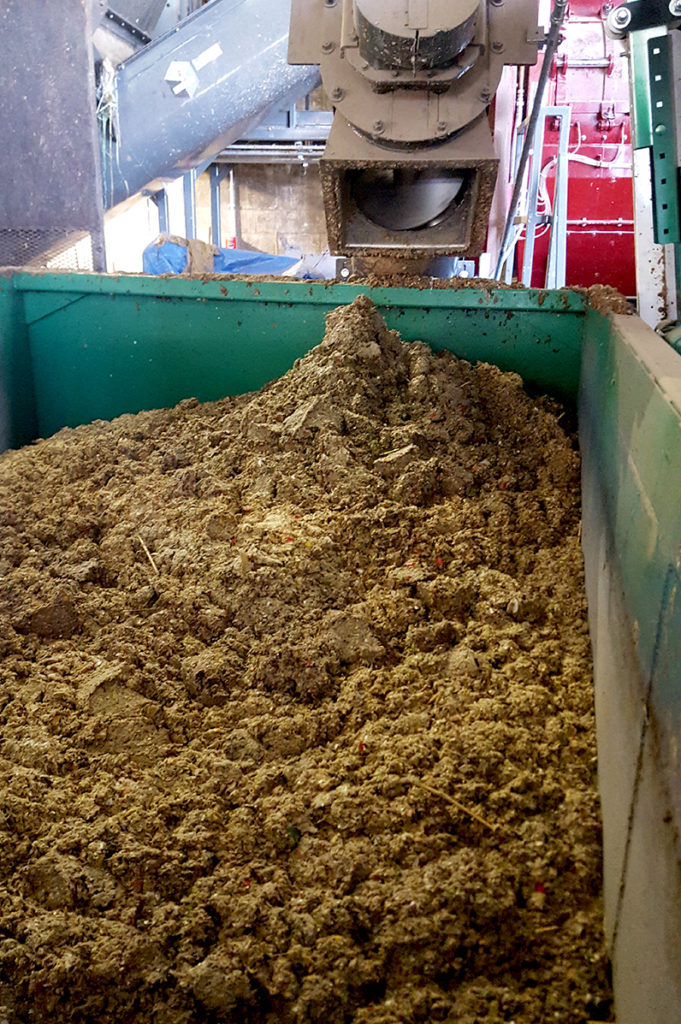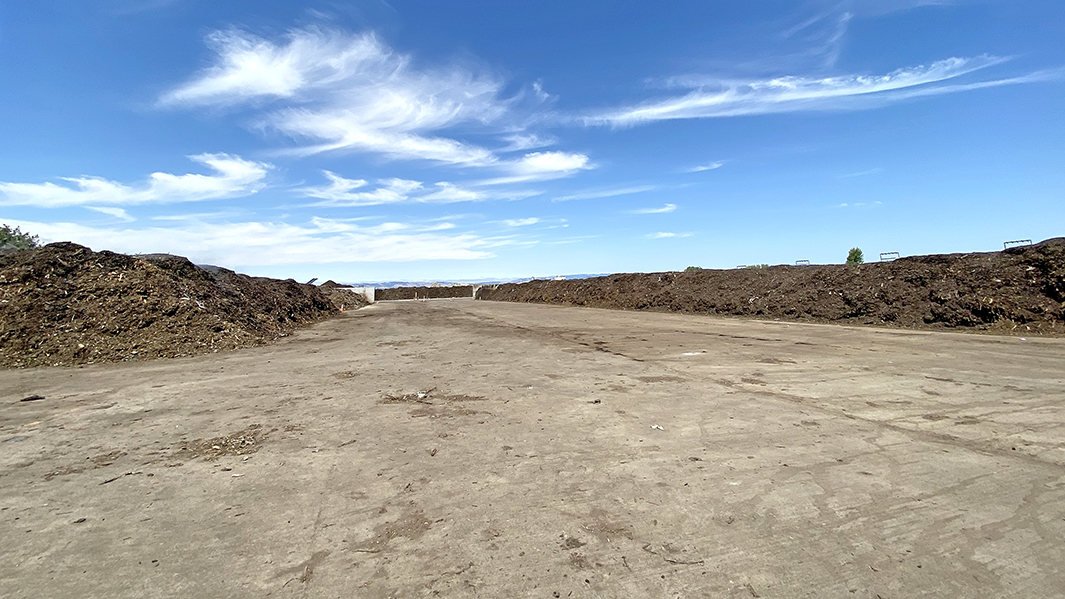Top: Photo courtesy of Napa Recycling & Waste Services

Output from a Scott Equipment depackager prior to anaerobic digestion in a dry fermentation system. Photo courtesy of Jim Miller
California’s Short-Lived Climate Pollutants Law (SB 1383), which went into effect on January 1, requires that 75% of organic waste be diverted from landfills by 2025. It cannot be used as Alternative Daily Cover or Alternative Intermediate Cover at a landfill. To comply, explains CalRecycle, organics can be sent to one of the following operations, facilities, or uses to be considered a reduction in landfill disposal — provided the organic waste is not subsequently landfilled:
- Operations or Facilities: Recycling centers, compostable material handling facilities, in-vessel digestion facilities and biomass conversion facilities
- Uses: Soil amendment for erosion control, revegetation, or slope stabilization, soil amendment for landscaping at a landfill, land application and animal feed
As of January 1, 2022, CalRecycle will consider if additional technologies or processes not listed above count as a reduction in landfill disposal. For a technology or process to constitute a reduction in landfill disposal, the permanent life cycle greenhouse gas emission reductions must be equal to or greater than the emission reductions from composting organic waste (0.30 MTCO2e/short ton organic waste). CalRecycle will consult with the California Air Resources Board to determine if the proposed process or technology constitutes a reduction of landfill disposal. Applicants will be notified within 180 days of submittal of a complete application with a response. A list of technologies and processes that are determined to constitute a reduction in landfill disposal will be posted on CalRecycle’s website.













